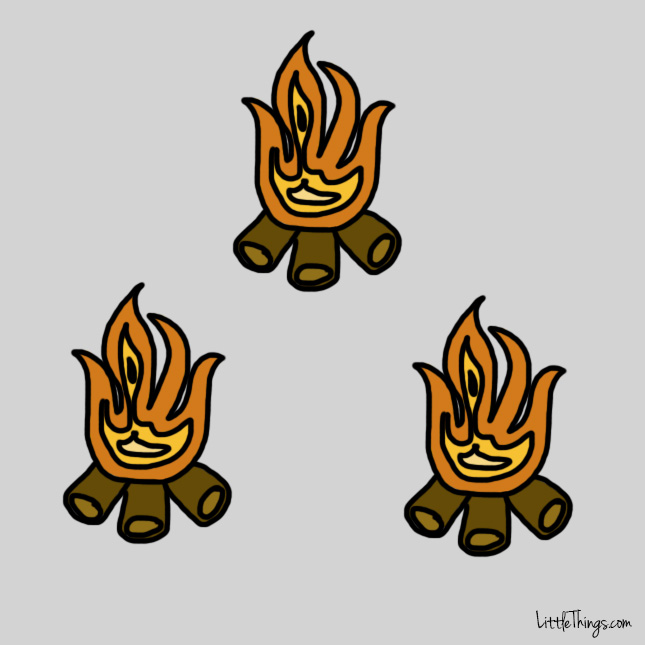We all get lost sometimes. It’s so easy to get turned around in a new city, large mall, or sometimes, even your own neighborhood.
These kinds of instances are annoying, but we usually figure things out by asking someone for directions or looking at a map.
What’s worrisome, however, is when someone gets lost in an unfamiliar, isolated place where there are no modern conveniences, like what happened to this grandma that went missing in the woods.
Yet, you don’t have to be an old lady to get lost in a place as disorienting as a forest. University of Stirling psychologist Paul Dudchenko and the author of Why People Get Lost claims that we all have an innate sense of direction or a "mental compass."
“It usually is very good because we walk around familiar landmarks by which we can orient ourselves,” he says. “But if we are someplace where there is no ability to correct it, our compass starts to drift.”
People’s senses of directions do vary, but it’s easy for anyone to lose their bearings. If you like to hike, camp, or are just a fan of the great outdoors, this can very easily happen to you.
And in order to survive your first 72 hours, you need to know these specific tips and tricks. They could be the difference between life and death!
Survival Tip #1: Let someone know you’re going out before leaving.

If something does happen to you in the woods, your best chance of surviving is getting rescued.
By telling someone who cares about you exactly where you are going, they can contact the right officials and start a rescue operation if you don't return.
Unfortunately, most people don’t bother with this step, because they want to live their lives independently — but this step could be key to survival.
Survival Tip #2: Carry essential tools and supplies with you.

According to the New York State Department of Environment Conservation, you should never go into the woods alone with out a full water bottle, food, a knife, waterproof matches, a watch and a small flashlight.
It is also wise to carry a garbage bag (preferably filled with a dry set of clothes), a fully charged cell phone, and watch. It may sound like a lot, but all of these items can easily fit into a standard-sized book bag.
Survival Tip #3: When you realize you are lost, sit down!

Robert Koester, a search and rescue expert and author of Lost Person Behavior, says that when you realize you are lost, the first thing you should do is sit down.
“Take a deep breath, sit down, and calm yourself,” he advises.
Making rash decisions because you feel anxious might worsen your situation. Most people don't think they will ever get lost in the woods, but it does happen — and often. Panic leads to wasted time and bad decisions.
Survival Tip #4: While you are sitting, begin to think.

Ask yourself important questions like, "How did I get here?" and, "How much time is left before it gets dark?"
If you did not bring a phone or a watch, you can tell how much daylight you have left with your hand.
To do this, extend your hand flat in front of you, as demonstrated above. Align your index finger right beneath the sun — but be careful not to look directly into it!
Each finger measures about 15 minutes, so your entire hand equals about an hour. Count how many fingers can fit between the bottom of the sun and the horizon. This will give you an approximation of the hours (or minutes) you have before the sun sets.
Survival Tip #5: Pinpoint your position with observations.

Once you are calm and know much time you have before sunset, try to identify landmarks that can help tell you where you are. These can include distinctive visuals, like mountains and trees, or sounds, like traffic and running water, which can help you find your way back to safety.
If none of these things are available to you, try the moss method. According to Popular Mechanics, moss typically grows on the north side of trees and rocks.
You can also look at spider webs, which usually hang on south side of trees.
Click "Page 2" to learn other live-saving tips, like how to find water!
Survival Tip #6: Make a plan.

Figure out if you should try to get home or stay put until morning. “In making this all-important decision,” says New York State Department of Environmental Conservation, “Consider how much easier it is to gather firewood during daylight.”
If you do decide to stay the night, gather as much firewood as you think you need to last the night, then make 10 more piles just like it.
People who have had to stay overnight in the woods always say the amount of wood they actually needed to keep a fire going was surprising.
Survival Tip #7: Find water.

Water is the most important thing, far more important than food.
According to Koester, “You can go over four weeks without eating – much longer than the average survival situation — so don’t waste energy looking for food unless it's there for the picking.”
Water often flows downhill, so head that way if you’re in search.
If you come across a large puddle, you can purify the water by making a water still from a plastic bag. Watch the video below for a great tutorial on this.
Survival Tip #8: Find or make shelter.

When spending the night in the woods, one of the biggest risks you face is hypothermia, the condition of having an abnormally low body temperature.
The best way to avoid this is to find a shelter so you can keep dry and warm. “Find a location out of the wind, rain, or snow,” advises Koester.
Caves are a good bet but are seldom vacant. Other great options are rock outcroppings, deadfall trees, and large live pine trees.
Once you have found a location, try to stay put. “You are much easier to find by others if you stay in one place than when you move around.”
Survival Tip #9: Make rescuers aware of your location.

Last but certainly not least, make rescuers aware of where you are.
“Make noise (blow a whistle, bang rocks together, shout), make your location visible from the air, use a signal mirror, or build a fire,” says Koester.
Three fires — either in a triangular shape or side by side — is a known international symbol for help.
After watching the important tutorial below, please SHARE this life-saving information with everyone you know!




